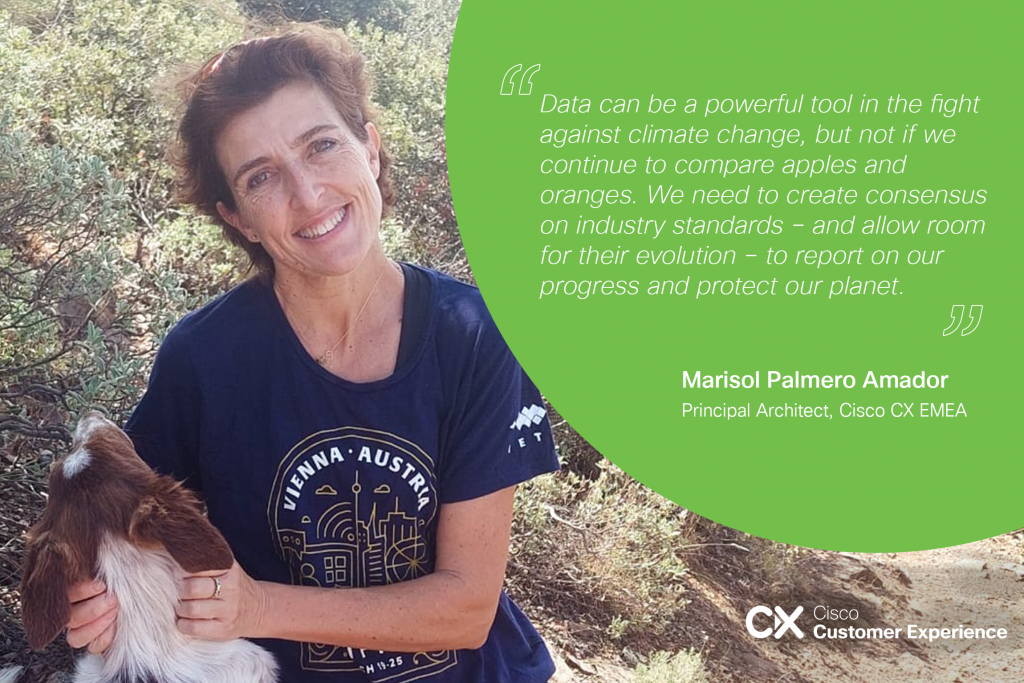In today’s world, there is no shortage of data. So, you’d think that building a sustainable IT infrastructure is easy. Think again!
One of the biggest challenges[1] the sustainability community – technical and non-technical – is facing is the lack of data standardization.[2] Without standards, we cannot make meaningful data comparisons and we lack the ability to monitor, report, optimize, and consistently automate sustainability-related metrics. Simply put, without standardization, we are left comparing apples and oranges!
As sustainability becomes increasingly important to organizations, the standardization problem becomes more urgent. Data must support decision-making, performance tracking, compliance, stakeholder engagement, and continuous improvement, enabling organizations to track their progress and contribute to a more sustainable future.
Adding to the complexity, data sources involved in sustainability are diverse. For every deployment that we do, those of us in technical roles need visibility beyond our own technology. We need to include: Supplier data,[3] Government data,[4] Industry data,[5] Third-party data.[6]
While all that data allows organizations to identify inefficiencies, pinpoint opportunities for optimization, and identify patterns and trends, structure is required to turn them into meaningful Key Performance Indicators (KPIs). There is a need not only to determine which are the right data sources but also to define the specifics of the semantics and units of measurement. We need to know how to compare those data sources and build those metrics that will determine thresholds and alert us when conditions are non-desirable.
You will ask me: Doesn’t measurement without standards still provide some value at an individual organization level? Yes, but it becomes challenging to aggregate and compare data across organizations or sectors. It may also result in discrepancies and inconsistencies when reporting to stakeholders.
How can we enable organizations to report against the same metrics? How can we help our customers decide which solution or vendor can support their own goals? How can we build trust with our customers and openly share what and how we are performing as part of their metrics?
We must learn how to make our improvements stick with standardization.
Standards and guidelines provide frameworks and methodologies aimed at consistent and accurate measurement and reporting. They support transparency and comparability among organizations. Some notable standards and guidelines in environmental sustainability include the Greenhouse Gas Protocol (GHGP),[7] the Global Reporting Initiative (GRI),[8] CDP (formerly Carbon Disclosure Project),[9] LEED (Leadership in Energy and Environmental Design),[10] Environmental Management Systems (EMS).[11]
The lack of Standardization leads the industry to perform a conservative analysis, which in turn degrades the accuracy and consistency of the output, including for reporting purposes. Let me explain why. The GHG Protocol provides requirements and guidance for companies and other organizations to prepare and publicly report a GHG emissions inventory. Per these requirements, we estimate the emissions from the “scope 3, category 11: use of sold products” category based on the following formula.
One of the key inputs above is the total product lifetime, which is currently between 5 and 10 years for most vendors’ products in our market. But, when it comes to the electricity consumed by those products – which is another key input – there is room for wide variability based on the level of optimizations done during deployment. Any small variance in how a company calculates energy usage and product lifespans can change the total reported value drastically, making tracking collective progress extremely challenging in the absence of a standard, agreed-upon approach.
To conclude, data can be a powerful tool in the fight against climate change, but not if we continue to compare apples and oranges. We need to create industry-wide consensus on data standards – and allow room for their evolution – to report on our progress and protect our planet.


CONNECT WITH US